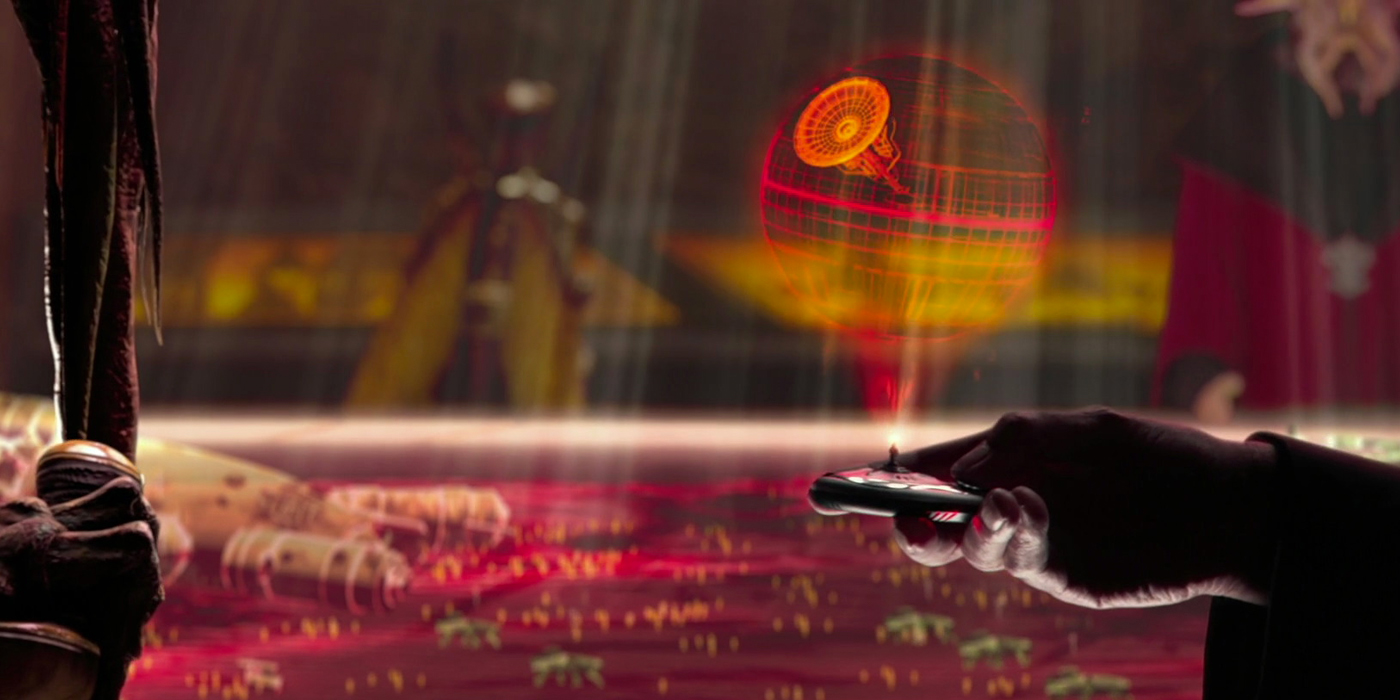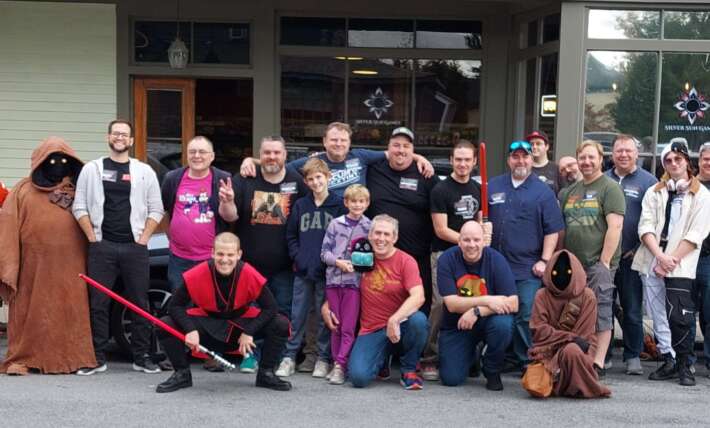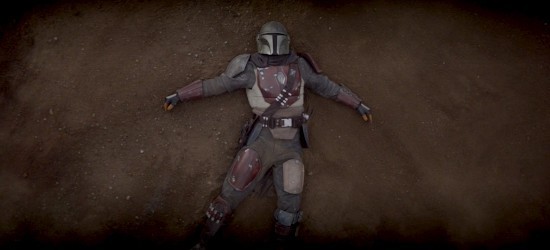Welcome to the eighth edition of the Mos Eisley Gazette!
The Gazette continues to take new shapes. Initially conceived as an article series to highlight the passion and effort put forth by event organizers or dedicated fans who keep their local Destiny scenes alive, it has evolved to encompass a broader spectrum of all things Star Wars Destiny in the continuation committee era.
We will absolutely continue to highlight the people – both organizers, players, artists and all the roles across the galaxy – but today we wanted to highlight a particular process.
The community has expressed an interest in how the ARH design process works. To that end, I am very excited to bring you a special edition that takes a peek behind the ARH design curtain while also revealing some fascinating insight about TCG design in general.
I met up with ARH co-workers and key members of our admin and design teams, echo3, echo7 and elrathion. These gentlemen wear many hats, but today, I asked them to hone in on one area that, in many ways, is the lifeblood of the game.
This is a lengthy, full-bodied article, so sit back and enjoy the ride. I hope you enjoy the real-world examples of design evolution sprinkled below as well.
What does it take to be a designer?
echo3
Fundamentally at the most basic level you need an extended knowledge of the game; the mechanics and rules; as an example – understanding the implication of proposing an interesting design with a ‘before’ effect or an ‘after’ effect, understanding the implication of that design, and its effect on the varying timing windows. Understanding of how it will interact with the existing card pool. I would also add an extensive Star Wars knowledge is pretty important.
echo7
You need to be willing to put in the hours. You need to know Destiny and what will work and be fun. And you need to know your Star Wars.
elrathion
There are a lot of factors that play into being a good designer for the team. First, it needs to be established that everyone has the capacity to come up with ideas, that’s not really a skill that is a differentiator. What sets you aside are a couple of core elements: Do you have a solid understanding of game mechanics and a good feel for what is balance? Are you a team player? How well can you take feedback and are you ok with your concepts not being used or completely changed? Can you think big picture and understand how your design weaves into the storytelling of other sets and also within the current set? Are you a strong communicator and are you easy to work with? We used to do a design test, and typically the mock concepts people submitted often made it clear to us whether someone was trying to make Wild Horizon type of cards or actually cards that were reasonable.
When was the moment you took an interest in SWD design?
echo3
Honestly, the moment I got a message from Zion asking me to be on the team for Unlikely Heroes.
echo7
I applied to join the team right back when the ARH project was announced. I’ve got to be honest; I didn’t give my designs and application a huge amount of thought so am not surprised I did not get selected initially.
elrathion
As soon as FFG dropped I knew I wanted to be a part of the future of this amazing card game.
When did you get involved in ARH design?
echo3
So, a few weeks after the release of High Stakes I had picked up a message from Zion asking If I would be interested in joining design for ARH4. Turns out it was Rockntroll who had put my name forward for the design position, so for that I’ll always be thankful to George.
echo7
I was involved in the ARH project early on due to my work on the database, and continued to write articles on echobase, doubling down on deck and meta analyses there. Eventually I got offered a place on the design team for Unlikely Heroes.
elrathion
I was involved from the beginning, but involvement increased significantly with Redemption.
What does it take to be an effective member of the design team?
echo3
Time. Dedicating a copious amount of time and effort into the process. Integrating ideas and developing ideas as the process goes on, bouncing ideas off other designers to get the most out of the team. Understanding the developmental process that every card goes through; very rarely does Version 1 of a card ever make it through to the end-product without an iteration change somewhere down the line.
echo7
You need to be in regular contact with the whole design team and play your part in the iterative process that eventually leads to the finished product. You need to be able to accept constructive criticism without taking offense and use it to make your designs ever better.
elrathion
Be willing to do the boring work required to make great sets: tweak and optimize your ideas into useable content, be humble and coachable and willing to set aside your vision if it clashes with the set design or guidance of the set lead. Make regular contributions. We do want strong voices, and vision is important. Being ok that your v1 will most likely be changed or cut, and wanting to iterate.
Design Evolution Example



The passive design on NED-B v1 ultimately shifted over to what became Twi’lek Resistance Fighter.
When we use the phrase “design philosophy” – what does that really mean?
echo7
Design philosophy can apply to individual designs, factions, or the entire set, but to me broadly refers to the guiding principles that a designer will abide by. There are a number of potentially competing priorities for designers, such as: Star Wars theme; mechanical theme (such as Blue villain turning dice to blanks); the importance of cards having other cards to support them; text length; the value of different playstyles (such as aggressive cards versus slow or mill cards); the limits to acceptable ramp, action cheating, and card draw; and complexity. Everyone values these aspects of design differently, and that to me describes someone’s design philosophy.
elrathion
We mean a few things. First, there are the fundamentals. There are core redlines in place that we don’t want to cross. Eg. Don’t go submitting designs for a 5 discard side on a character, it will be almost auto rejected. Second, there are core concepts in place which I think Echo7 did a good job at outlining. Finally, there is a vision aspect: how does the design further the game in the current rotation and future rotation. Ultimately the design lead and set leads play a crucial role in making sure this is guarded.
What are you most known for as it relates to ARH design?
echo3
Hopefully, people know me as the first back-to-back set lead with Seeking Answers (Who I share co-set lead title with Elrath) and Display of Power. From a design perspective I am an absolute stickler for theme; within Display of Power I really tried to capture as much ‘Star Wars’ theme as I could into each individual card, for me it adds that additional layer of depth and fun to the game.
echo7
I absolutely love Star Wars theme and mechanical theme. I dislike good ideas that exist in a set as one-offs with no support cards to back them up. However, I wouldn’t say I’m “known” for those opinions. What I am known for is being a stickler for highlighting awkward interactions or outcomes, and syntax. It is important to me that Destiny plays out smoothly, and while some complexity is absolutely necessary to keep Destiny interesting, it shouldn’t be needlessly convoluted or confusing.
elrathion
Great designers should not strive to be known in their work. Ideally the work should be shared with the team, and people should be left guessing who designed what. If people know that designer A designed this, then it’s probably because their design shows bias towards something, and that’s often not great. It can also easily open up critique. “Vika clearly designed this because he likes middle-middle decks.” “Rebel Traitor clearly designed this because he doesn’t understand that card draw is overpowered.” etc. As a designer, and a lead, hopefully the community will realize my attempt to be unbiased towards my own preferred playstyle and create an environment where different type of players ranging from the aggro to the control players and the many shades in between can find their home in this great game. Probably if you ask the community though they might say the guy who completely changed the course of the game from FA to Redemption 😜
How does the design team work together effectively in a virtual, global world?
echo7
The method of communication has varied a bit according to who the set lead is. It’s mostly centered around a discord design channel where people can chip in as and when they like to discuss either bigger ideas or controversial ones, a platform where people can discuss at length individual cards, and chats between individuals over particular points of design that would otherwise swamp the general channel.
elrathion
This is a really potent question. I have a real bias towards dialogue over voice, and it’s hard to accomplish that with timezone differences. So you need to produce designs frequently, and then give opportunity for others to comment, and similarly frequently engage feedback, and give others enough time to respond.
Design Evolution Example


As emphasized throughout the article, v1 of a card rarely makes it all the way through design unscathed.
What is your proudest moment as an ARH designer?
echo3
Ah man, tough one. I’d go with heading up Display of Power; I feel like it turned out to be a solid set with some cool mechanics and interactions. The meta seems diverse off the back of it too. So that take’s the top spot.
From a mechanics point of view, I would say that the introduction of the ‘reroll’ symbol; Introducing a new symbol 5 years into the life of the game was not an easy feat; it was met with mixed response initially but now I feel after being 2 sets in, it holds its value and respect as part of the symbol family. I’d name a few individual cards man, but honestly I’ve designed so many I couldn’t pick out one or two.
echo7
As a solo moment, probably the design of Unique Perspective. It was a design I proposed, and I absolutely love the fact that it pushes players into very particular builds, giving them an incentive to try something a bit unusual.
My most satisfying moments in design though are iterative design discussions, where no single person is responsible, and something amazing comes out. Cards such as Morai, where the end product precisely represents the theme we were trying to capture in a relatively simple mechanic.
What is something you wish you could change from an ARH design perspective?
echo7
I think we have a great team at the moment, and I’m glad to be part of it. I think we could do better at taking good ideas from outside the core team when they get posted elsewhere, but it is difficult, especially when you’re trying to incorporate new ideas into an existing vision.
elrathion
With more manpower, we could be more disciplined, have more voice dialogue and have more longterm vision and adherence to our own principles than we sometimes have, but it’s difficult with limited resources, and everyone is giving their best.
How does ARH approach new mechanics and the support of those new mechanics?
echo7
New mechanics get a soft start when they appear, to test how they play in the real world, and to assess the community responses. Charm and reroll symbols for instance had some support in Seeking Answers, but that has been developed further in Display or Power. Overdeveloping a new mechanic has the risk of being either pitched at the wrong power level, or making the set feel a bit monotonous. New mechanics also have a shelf life. Detect for instance hasn’t been referenced on any cards since High Stakes, and even in that set there were only 3 such cards. By consciously allowing mechanics to rotate in this way, we let the meta evolve and also allow ourselves the freedom to not have to continue to design support for old mechanics.
elrathion
To begin with, we have to think through the utility of the concept in the broader scheme of the game. Is it adding value? Does it have longevity? We don’t want to innovate for the sake of innovation and being smart. Second, how will the concept feel to other players? Third, how much design debt will this concept add to future sets? If the concept passes a few gates and is deemed worthy to explore, then we typically gradually introduce it, and make sure that the concept isn’t fully discovered or matured in just one set, but gets richer over time. We love design where a card finds new light in future sets and players discover ways to incorporate the set pieces we give them.
Design Evolution Example


echo7
The original design of this card was to further the Capital Ship mechanic and provide a decent target for Kuat Drive Yards. After much discussion, we decided it had to: Roll in those Planetary Bombardment dice, but without having a parallel die for fear of being abused by Garindan; A card name that references the art on Planetary Bombardment; A cost higher than the original PB card; A way of synergising with Mr Capital Ship himself, Lorth Needa; The ability to blow up other supports, partly for theme, and partly to set it apart from the other big red, Blizzard 1.
As the art on Planetary Bombardment shows a Super Star Destroyer, and as we were worried about the prospect of a ramp deck playing two of these, we made this card Executor. A synergy with Needa was achieved by making the extra die roll in after resolving a Red leader die, as Needa’s ability prevents removal. Finally, as we’d already utilised an after ability for one die, we went with a Power Action for the second die, rolling the support trashing ability into that action as it was more balanced and felt more thematic.
When we finally had the text, it felt obvious that what we’d achieved was what we wanted all along, but sometimes getting to that point can be a hugely iterative process, even for just one card in a large set. Costing it was a nightmare due to Kuat Drive Yards and this card got changed from an 8 cost to a 7 cost at the eleventh hour, a decision that made us nervous at the time, but I think was a good call in retrospect.
Is there anything we haven’t covered so far that you’d like the community to know about you or ARH design?
echo7
Please know that we do listen to feedback posted privately or publicly. Ideas for the future, designs you don’t like, mechanics you want to see more of, or would rather we didn’t have, or cards that people think are overpowered. Without honest and constructive feedback, we are limited in our ability to effectively support the wonderful community of players out there.
elrathion
The understanding that the sets you play with are the work of hundreds of hours from volunteers all over the world who are unpaid, some who treat it as their full time job, and who are trying their best. Constructive feedback is important and necessary, but we also have to be mindful about the impact of the tone of our feedback to each other as a community keeping the above in mind. I have seen people check out or quit because they were so let down about the harsh tone and assumptions people make about the work, and as a community we have to keep in mind that the team does the best they can with limited resources, and we have to try to assume the best intentions.
Thank You
I want to thank echo3, echo7 and elrathion for taking a moment to reflect on design. I hope the community will walk away from this article with a better understanding of the process, as well as the manpower required, and perhaps most importantly, that the stewardship of the game we love, SWD, is in great hands.
Coming Soon
Mos Eisley Gazette – strategy and deck tech edition.



1 Comment
Another great article and look into the movers and shakers of the Destiny and ARH communities! Looking forward to the next instalment xoxo
Comments are closed.